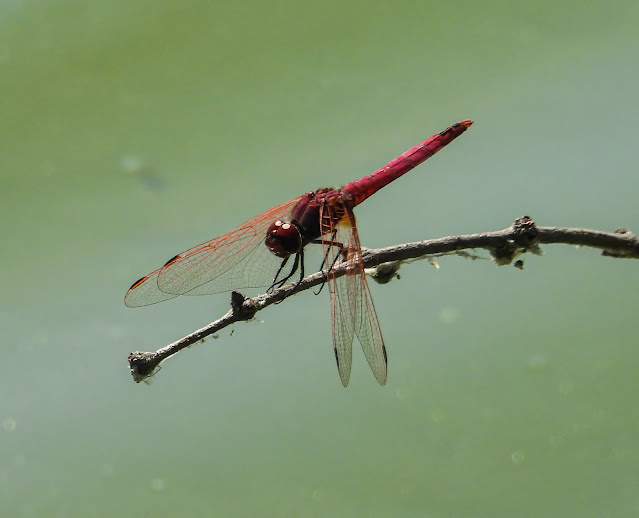Trithemis annulata, commonly known as the violet dropwing, violet-marked darter, purple-blushed darter, or plum-coloured dropwing, is a species of dragonfly in the family Libellulidae. It is found in most of Africa, the Middle East, and southern Europe. These dragonflies are called dropwings because of their habit of immediately lowering their wings after landing on a perch. Males of this species are violet-red with red veins in the wings, while females are yellow and brown. Both sexes have red eyes.
Trithemis annulata is a robust medium-sized species with a wingspan of 60 mm (2.4 in). The mature male has a dark red head and a yellow labium with a brown central spot. The eyes are red with white spots on the rear edge, and the frons is dark metallic purplish-red. The prothorax is violet with slightly darker longitudinal stripes.
The membranous wings have distinctive red veins, the pterostigma is orange-brown, and there is a large orange-brown splash at the base of the hind wings. The abdomen is fairly broad and is pinkish-violet, with purple markings on the top of each segment and blackish markings on the terminal three segments. Females are a similar size to males, but the thorax is brownish, and the abdomen is yellow with dark brown markings. The wings of females lack the red veins of males but have similar orange-brown patches. It is very similar in appearance to the red-veined dropwing (Trithemis arteriosa), but that species has a more slender abdomen and a wedge-shaped black area on either side of the tip of the abdomen.
%201.jpg)
%20(Trithemis%20annulata)%201.jpg)
%20(Trithemis%20annulata)%202.jpg)


%201.jpg)

%201.jpg)




%201.jpg)




%201.jpg)


%201.jpg)
%202.jpg)

